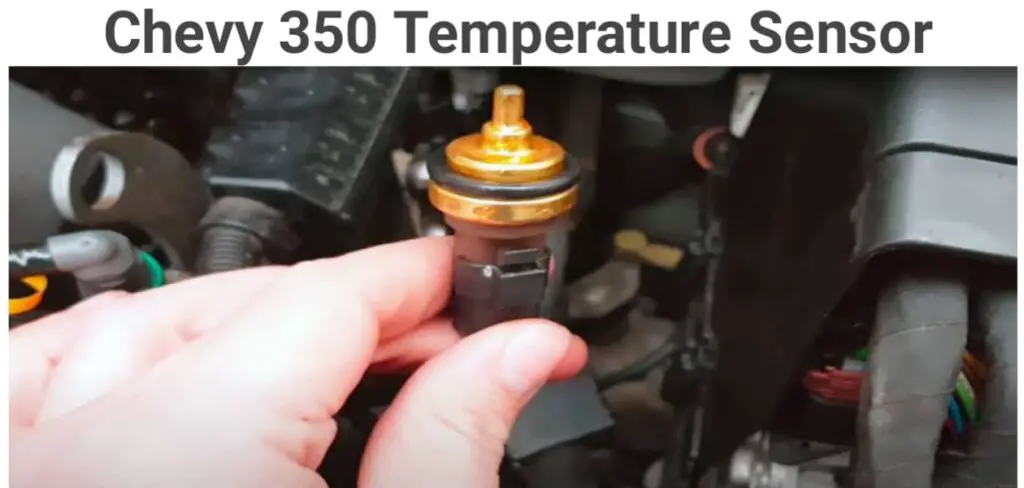Last month, my friend had a problem with his Chevy 350 enggine. The local mechanic he consulted had disappointed him.
So, he decided to call me over to check the engine and the checks we carried out indicated that the oil temperature sensor could be the cause of the problem.
To confirm this, we needed to test the sensor but it turned out that both my friend and I had no clue of its location.
To clear my ignorance, I am writing this article to inform you and me of the various Chevy 350 sensor locations.
Chevy 350 Sensor Locations
These are the top 8 Chevy 350 Sensor Locations:
1. Chevy 350 Temperature Sensor Location
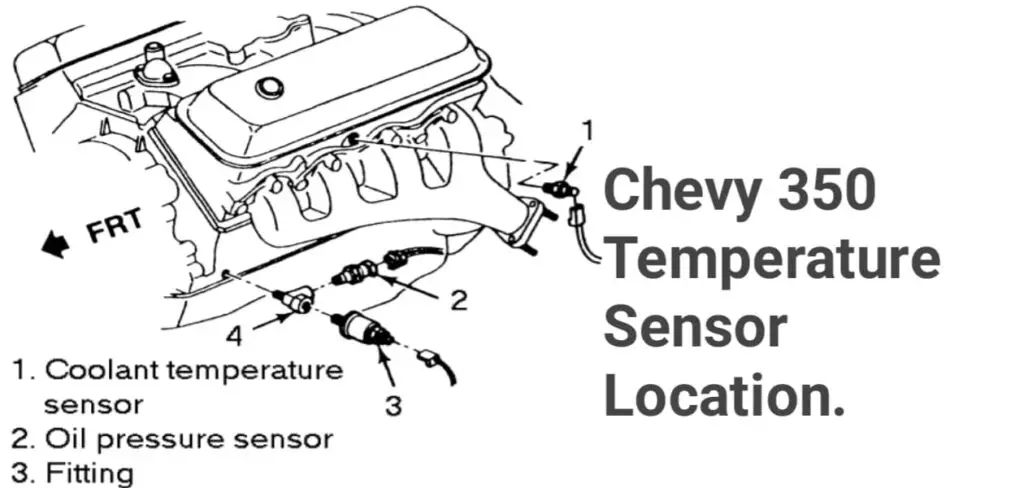
The Chevy 350 Temperature Sensor is located behind the front bumper of the vehicle.
Check out this post on How to Adjust Valves on A 350 Chevy to know more about the location of the valves.
2. Chevy 350 Water Temp Sensor Location
The water temperature sensor is located close to the cylinder head water outlet. It keeps a constant check on the temperature of the engine coolant.
3. Chevy 350 Oil Temp Sensor Location
The Chevy 350 sensor location for the oil temperature sensor is in the engine block or the cylinder head of the vehicle.
Most vehicles are equipped with an oil temperature gauge.
This gauge can inform the driver about the state of the oil by displaying the information with the help of the oil temperature sensor.
4. Chevy 350 Oil Pressure Sensor Location
The Chevy 350 oil pressure sensor is located in the cylinder block near the oil filter.
Oil pressure sensors are very important components of the engine.
They are responsible for monitoring the actual oil pressure in the lubrication system.
Proper maintenance of the oil pressure sensor is very necessary as it is prone to developing problems in the long run.
5. Chevy 350 Coolant Temp Sensor Location
The Chevy 350 sensor location for coolant temperature sensors is to the rear of the right cylinder head which is found directly below the air intake pipe of the engine.
In some vehicle models, it is located at the back of the coolant pipe.
The coolant sensor is used to determine the temperature of the coolant in the cooling system.
Fixing the coolant temp could fix potential Chevy Starter Engagement Problems.
6. Chevy 350 Knock Sensor Location
The knock sensor is usually located on the exterior of the engine block. It is used to monitor the knocking sounds in the engine.
The knock sensor helps to prevent damage to the engine.
Adequate maintenance of the knock sensor is very important as a faulty knock sensor can cause various harm to the engine.
Such harms include; reducing the power of the engine, increasing the combustion rate, etc.
7. Chevy 350 Crank Sensor Location
The crank sensor of the Chevy 350 is usually located on the side of the crankshaft pulley which can be found on the left side of the engine compartment.
8. Chevy 350 Crankshaft Position Sensor Location
The Chevy 350 sensor location for the crankshaft position sensor is towards the front of the engine, near the bottom block.
Crankshaft position sensors are very vital; such that car engines cannot function without them.
A faulty crankshaft position sensor can cause a complete engine failure.
I hope you now know all the Chevy 350 Sensor Locations.
Chevy 350 Temp Sensor Wiring Diagram
This is the Chevy 350 Temp Sensor Wiring Diagram:
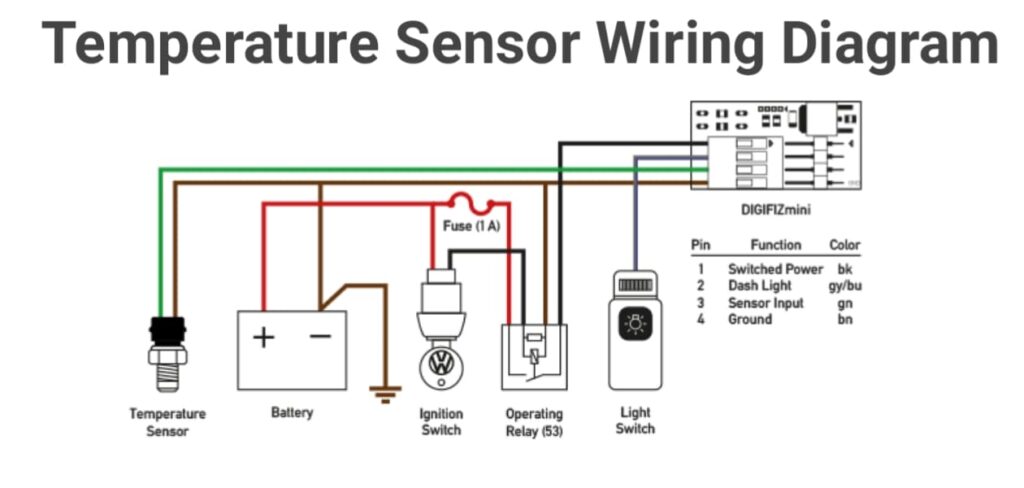
Chevy 350 Oil Pressure Sending Unit Leak
Chevy 350 oil pressure sending unit leak is caused by a faulty or damaged oil pressure sensor.
The oil pressure sensor is normally designed to monitor the level and pressure of the oil in the engine.
When it becomes faulty, it can cause various levels of damage to the engine. One of the signs given off by a faulty oil pressure sensor is oil leakage.
The signs of an oil leak in your car can vary from low oil levels to a smoking exhaust and the production of a burning smell from the engine.
Depending on how bad the oil pressure sensor is, replacing it with a new one is usually the most effective method of stopping the oil leak.
Also, ensure that you fix the oil leak promptly because a delay can cause serious damage to the engine.
If you intend to fix the pressure sending unit leak by yourself, you should be aware of the above mentioned Chevy 350 Sensor Locations.
How Do You Check a Temp Sending Unit?
The temperature sensor/temperature sending unit is a very important sensor in your Chevy 350 because it affects the performance of the engine.
A faulty temperature sensor will negatively affect the performance of the engine.
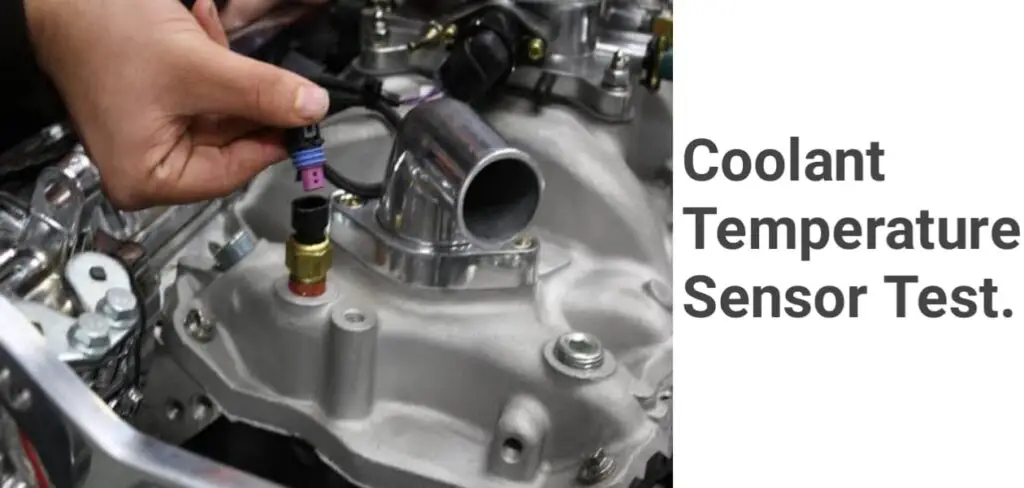
Here are some steps you can use to check a Temp Sending Unit:
Method 1:
- Check for any signs of corrosion damage on the electrical connector and the wiring of the temperature sensor.
- If corrosion is present on the temperature sensor’s electrical terminal, remove it using a contact cleaner.
Method 2:
- Use a digital multimeter to measure the resistance across the terminal pins of the temperature sensor.
- Carry out this measurement twice; first, when the engine is cold, and second, after it has been run.
- Replace the sensor if the resistance remains unchanged when the engine’s temperature rises.
- If the sensor has a broken internal contact, it will only register infinite resistance.
- If the internal contacts of the sensor are shortened, it will record zero resistance.
How Tight Should a Coolant Temp Sensor Be?
The coolant temperature sensor should be tightened at approximately 1.69nm/15lb-in with a torque wrench.
You can tighten it a bit more if there is a leak.
What Does an Oil Pressure Sending Unit Do?
As a vital sensor in a car’s engine, the oil pressure sending unit/sensor performs 2 important roles. They are:
- It monitors the temperature of the oil in the car engine and displays its data to the driver.
- The oil pressure sensor protects the engine from damage as a result of overheating by stopping the operator and switching off the engine.
What Are the Signs of A Failing Temperature Sensor?
It is important to know all the Chevy 350 Sensor Locations before trying to identify the one that is failing.
These are the signs of a failing Temperature:
- A sudden turn-on of the engine light.
- Overheating of the engine.
- Increase in the combustion rate (fuel consumption) of the engine.
- Poor performance of the engine.
- Production of smoke or a burning smell from the exhaust.
- Sudden damage of the water pump.
How Much Does It Cost to Replace a Coolant Temperature Sensor?
The cost of replacing a coolant temperature sensor is about $150-$200 where the sensor costs about $60-$90 while the labor costs around $100.
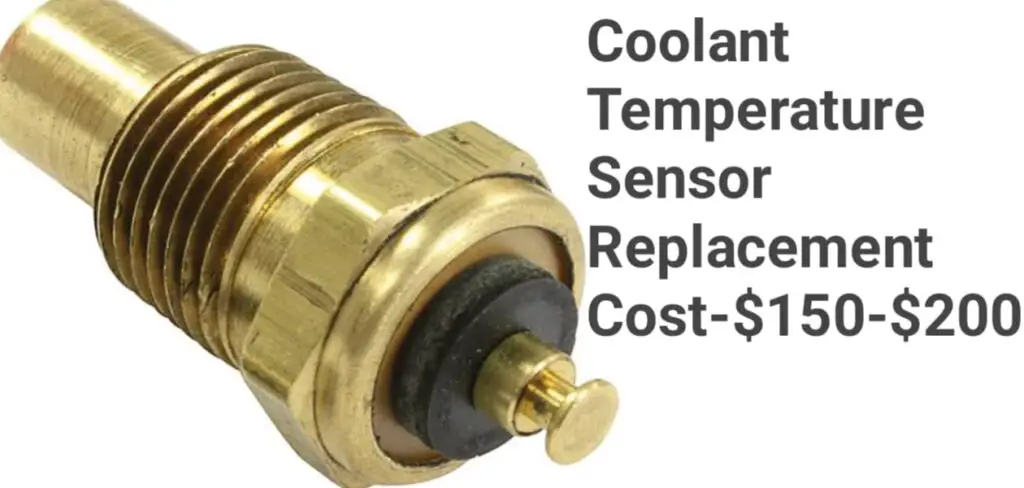
This Coolant Temperature Sensor replacement cost depends on the labor you hire and your location. You can do the replacement yourself if you don’t have money for labor.
How Do You Test a Coolant Temperature Sensor?
Before you proceed to test your coolant temperature sensor, you must first know where it is located.
Check out the Chevy 350 sensor locations listed above to know more about the location of the coolant temperature sensor.
Follow these steps to test a coolant temperature sensor:
- Sever the connection between the connector and the coolant temperature sensor.
- Use a digital multimeter to measure the resistance through the terminal pins. Record the value obtained from the measurement. Take this measurement when the engine is cold.
- Restore the connection between the connector and the coolant temperature sensor and heat the engine by running it for two minutes.
- Disconnect the connector again from the coolant temperature sensor and take a second measurement for the resistance across the terminal pins. Record the value obtained from the measurement.
- Compare the first and second values obtained from the measurement. If the difference between the two is not up to 200 ohms, it is an indication that the sensor is either dirty or faulty.
- If the resistance reading is discovered to be less than 200 ohms, take out the temperature sensor from the engine and clean it properly. After cleaning it, conduct the test for a second time. If the reading is low again, it confirms that the temperature sensor is faulty.
- Once this is confirmed, promptly replace the coolant temperature sensor with a new one to prevent potential damage to your engine.
How Long Does It Take to Change a Coolant Sensor?
It should take you 4-5 hours to do the replacement yourself but an experienced mechanic should be able to do it within 2-3 hours.
Note: Make sure you know the Chevy 350 Sensor Locations before changing a coolant sensor by yourself.
Conclusion
This is how far we will go on this topic. I hope that you have gained a lot of knowledge from this article; especially about the various Chevy 350 sensor locations.
If you still have issues with locating any of the sensors in your vehicle, check the service manual for your car model to get a proper guide.
